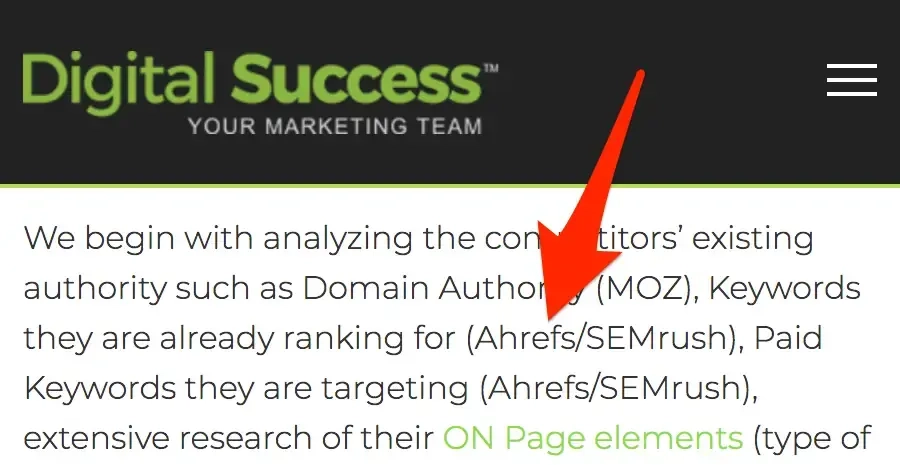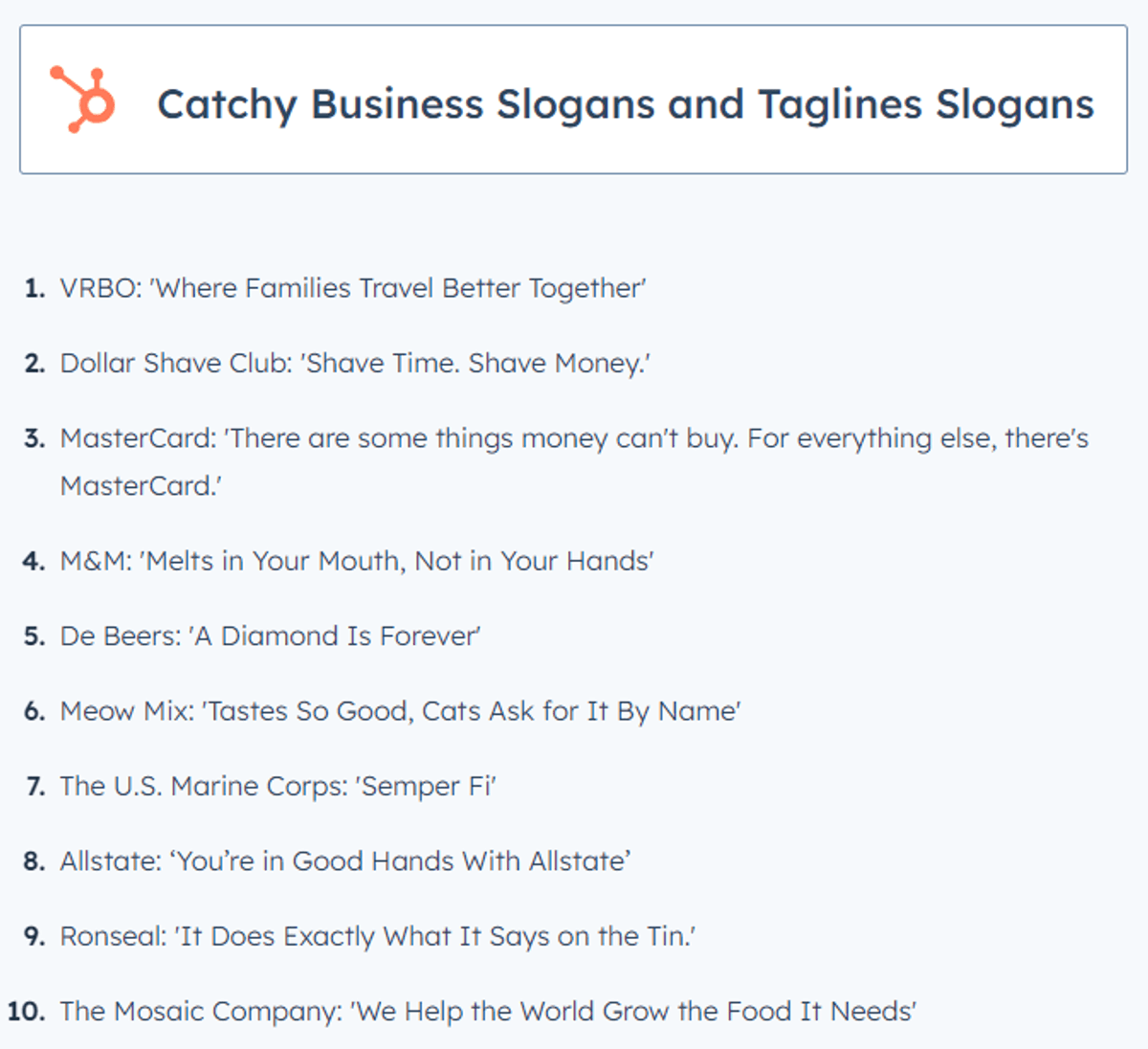
Great news, your brand was mentioned on another company’s website. The bad news? They haven’t given readers a link to your site.
This is called an unlinked mention—and converting it into a linked mention is a great link-building tactic.
In this article, we're going to show you how to find these unlinked mentions, and how to convert them into linked mentions. All you need to do is approach the website owner and ask them to include a link to your site where they mentioned your unlinked brand.
It's easy and largely just involves reaching out and making a simple request.
In this article, we cover the following:
🔗 What is an unlinked mention?
🔗 How to find unlinked brand mentions.
🔗 Examples of unlinked mentions.
🔗 How you can use an unlinked mention as an SEO opportunity.
Key points on unlinked brand mentions
An unlinked mention is when a website mentions your brand, product, or services without providing a backlink to your website.
Unlinked mentions are missed SEO opportunities as no organic traffic is directed to your website.
There are some simple steps you can take to turn unlinked mentions into high-quality backlinks.
There are certain tools you can use to find and target unlinked mentions.
What Are Unlinked Mentions?
Often referred to as fresh mentions or brand mentions, an unlinked mention is when a website references your brand, products, or service offerings—really anything to do with your company—without providing a link to your website.
Usually, when websites mention a brand name, they embed a hyperlink in their text—such as a blog post—that directs users to your website or a page on your website.
On the one hand, an unlinked mention indicates that your hard work to create brand awareness is paying off. But unlinked mentions don’t boost your website’s SEO, and they don’t send any organic traffic your way.
The good news is that building links from unlinked brand mentions is a highly effective link-building strategy.
The hard part—getting your brand mentioned—is already done. All that’s left to do is find the relevant mentions and reach out to the site owner for a link.
What Is the Difference between Unlinked Brand Mentions and Nofollow Links?
A nofollow link is when a website links to your site but attributes the link to nofollow, which means your website doesn’t benefit from the link.
In other words, the website provides a hyperlink to your website, but this doesn’t have any SEO value or contribute to your backlink profile.
An unlinked mention means no link of any kind is included in the website content.
Here is an example where the beauty brand L’Oréal is mentioned in a blog article, yet no links are provided to the brand’s website.
The only links within the article direct readers to where the products can be purchased online:
And here is a website that lists popular SEO platforms but doesn’t link to any of the brands’ websites:

Why Is It Important to Address Unlinked Mentions?
When Google released its Penguin update in 2016, the search engine started targeting manipulative link building strategies like link schemes and paid links.
As a result, link builders were required to earn high-quality backlinks that provide better SEO value rather than focusing on quantity.
The natural backlinks that come from relevant, niche, and trustworthy websites are vital to your SEO success.
These natural links are added by writers or website owners because they find your content or brand valuable and relevant to their readers. Search engines prefer these links because they are seen as more trustworthy and relevant.
Unlinked brand mentions are one of the most valuable link-building opportunities because they already check the right boxes:
The writer mentioned your brand or products because they genuinely like them or believe they would be useful for their audience, not because a marketer asked them to.
This makes the mention completely natural, relevant, and trustworthy.
For this reason, it’s important that you take action on any unlinked brand mentions you find.
Why Are Unlinked Brand Mentions Problematic?
In today’s world, links are taken into account by Google’s algorithms.
You could even argue that links are the most important contributor to your position in its search engine results pages (SERPs).
While internal links present on your website send signals to Google about the context of your website, backlinks from other domains—especially authoritative domains—can help build the authority of your website and improve your search rankings.
When Should I Not Convert Unlinked Mentions?
While it’s important to address any unlinked brand mentions that you find, not all mentions should be claimed.
These situations include:
When such mentions talk negatively about your brand.
When the site owner asks you to pay for links.
When the mention is on a private blog network (PBN).
When the website with the unlinked brand mention is a part of a link farm.
When it comes to being asked to pay for links, you’d need to consider all the factors:
If the website has a high domain authority (DA), you may want to consider paying for the link.
Consider the price of these links, can you afford them and would they be a worthwhile investment?
Is the context of the article that your link would appear in relevant to your niche?
On the other hand, if the content that mentions your brand isn’t relevant, it may not be worth your while to purchase the link.
What Are PBNs and Link Farms? 🤔
- Private blog networks (PBNs) are networks of blogs created solely to link to other websites to improve SEO.
- Link farms are a set of websites created to link to other pages to improve their search engine ranking.
Both of these link building tactics are considered black-hat SEO strategies, which means that they manipulate search engines.
Types of Unlinked Brand Mentions
Not every unlinked mention you’ll find online specifically mentions your brand. There are other types of brand mentions, including:
Mentions that relate to your product or service offering.
A mention of any brand representatives or ambassadors that you may have.
Mentions that include your company’s representatives.
The slogan associated with your brand.
Anything else related to your business.
Here is an example of a few brand slogans being mentioned without any link to their websites:

4 Steps to Convert Unlinked Brand Mentions into Backlink Success
There are some straightforward steps you can take to ensure you convert unlinked brand mentions into the quality backlinks your website needs.
It’s important to remember that each of these steps requires some patience. Like any good thing, quality takes time to achieve.
Step 1: Find unlinked brand mentions
The first step you need to take to convert unlinked mentions into valuable backlinks is to locate these mentions.
Without knowing where these unlinked mentions are, how will you be able to pursue them and turn them into SEO value?
This is arguably the most time-consuming aspect of converting unlinked mentions.
Various tools can help you detect your unlinked mentions. Some examples include:
How to find unlinked mentions with Google Alerts
Google Alerts is a free tool by Google that helps you monitor the web for new content.
You can set up alerts for specific keywords, and Google will notify you whenever it finds new results matching those keywords.
By setting up Google Alerts, you can track brand mentions, product names, or other relevant keywords and discover where your brand is spoken about online.
This enables you to turn those unlinked mentions into valuable backlinks.
First, head over to Google Alerts and type in your brand name, product names, or other relevant keywords.
Remember to use quotes for exact phrases. For example, type "Your Brand Name" to ensure Google only alerts you to mentions of that exact phrase or word:

Click on the “Show options” button to fine-tune your alert settings. Once you’ve decided upon your alert settings, click “Create alert”:

Keep an eye on your email for notifications from Google Alerts. Each alert will show you new unlinked mentions as they appear online.
How to find unlinked mentions with Brand24
Brand24 is a social listening tool that helps you monitor your brand’s presence across the Internet, including social media, blogs, forums, news sites, and more.
With Brand24, you can track mentions of your brand, analyze public sentiment, and engage with your audience in real-time.
It makes it easy to spot unlinked mentions of your brand by providing a view of where and how your brand is being talked about online.
Go to the Brand24 website and sign up for an account. If you already have an account, log in:

Click on “Add new project” on your dashboard:

Enter your brand name, product names, or any relevant keywords you want to track. You can add multiple keywords to ensure comprehensive coverage:

Once your project has been set up, your Brand24 dashboard will display all the mentions of your specified keywords across the Internet.
You can filter these mentions by date, source, sentiment, and more to find the most relevant mentions:

How to find unlinked mentions with Semrush’s Brand Monitoring Tool
Semrush’s Brand Monitoring Tool is a feature within the Semrush suite designed to help you track and analyze your brand’s online presence.
First, log in to your Semrush account or sign up for an account:

In the Semrush dashboard, go to the “Projects” section. Create a new project by entering your domain name and project name:

Once your project has been created, select the “Brand Monitoring” tool from the list of available tools:

Click “Set up”, then enter your brand name, product names, and any other relevant keywords you want to track.
How to find unlinked mentions with Google Search
Although slightly more complicated, you can also use advanced search modifiers in Google to see your unlinked mentions.
Search modifiers are characters and commands you can use in search engines to refine your search results.
By using these modifiers, you can narrow down your search to find exactly what you're looking for, such as unlinked mentions of your brand.
Here’s how to use them:
To search for an exact phrase, use quotation marks around your brand name or product name. For example, "Your Brand Name" brings up all the exact mentions of your brand:

Naturally, if your brand name features on the SERPs, it will contain links to your own website. When looking for unlinked mentions, you’ll want to exclude your own website from the results.
To exclude results that mention your brand along with your website, use the minus sign (-). For example: "Your Brand Name" -site:yourwebsite.com:

While this does exclude your website, it includes all unlinked results, such as those found on your social media pages.
You can combine multiple search modifiers to narrow down the results further. For example: "Your Brand Name" -site:yourwebsite.com -site:anotherwebsite.com.
Keep in mind that you don’t only want to search for your brand name. You’d also want to search for keywords that are likely to appear on the page where your unlinked mention features.
So, think about the words that would appear on a website in addition to your brand name. This can help you narrow your search.
Step 2: Organize your unlinked mentions
Once you’ve found your unlinked mentions, it’s best to start compiling a list of where these mentions appear.
Create an Excel or Google Sheets spreadsheet with columns that include:
URL: Copy and paste the URL of the page where your brand is mentioned.
DA and PA: Use SEO tools like Moz or Ahrefs to find the domain authority (DA) and page authority (PA) of the website.
Traffic: Estimate the website’s traffic with tools like SimilarWeb or Semrush.
Type of mention: Note whether the mention is in an article, blog post, forum discussion, etc.
Prioritize high DA and PA websites. The more authoritative the website that mentions your brand, the better the reward of converting the unlinked mention.
Step 3: Locate the contact details
Before you move on to actually reaching out to the websites that mention your brand without links, you need to find out who to contact.
Yes, you could fill out the ‘Contact us’ form on the website—but who’s to say you’ll reach the right person?
Instead, spend some time finding the contact details of the relevant person behind the website who actually has the authority and the ability to add your backlink to your unlinked mention.
We recommend using a tool like Snov.io to find contact details. Snov.io is a versatile email finder and lead generation tool that helps you find and verify email addresses.
It connects to LinkedIn, which makes it easy to gather contact information for the authors or site owners of the pages where your brand is mentioned.

Avoid contacting absolutely everyone who works at the company to try to convert your backlink.
Instead, target one person at a time.
If you don’t get results, move on to the next person.
Step 4: Craft a good pitch to boost your outreach efforts
Now that you have located, listed, and prioritized your unlinked mentions, you can begin your outreach efforts.
Outreach involves contacting the webmaster and asking them to add your backlink to the page that mentions your brand.
However, this is not as simple as firing off a quick, generic message.
Instead, you need to craft a well-written and compelling pitch that gives the website owner a good reason to include your backlink within their web content.
It might take some trial and error to discover what works best when it comes to targeting these companies or individuals, but here are our top dos and don’ts for your backlink outreach efforts.
Don’t: Be pushy
Ideally, you want your pitch to be so good that the owner feels like the best option would be to include a backlink to your site.
However, you don’t want to force them to do it.
Being unnecessarily pushy may even result in the website’s owner removing your unlinked mention entirely—which you’d definitely want to avoid.
Do: Offer additional value
If you can prove to the website owner that your backlink would add value to their content, it will help convince them, so be sure to mention this in your pitch.
Of course, you want whatever reason you offer them to be professional and ethical.
If you can, offer to provide them with a backlink from your own website in return (if their company is relevant to your brand, of course).
You can also provide value by highlighting any misspellings, grammar errors, or broken links that you’ve found on the website. However, you should be mindful of how you communicate these website flaws to the website owner. More on this below.
Do: Be polite
The best thing you can do in every aspect of your exchange with the website owner is to remain polite and respectful at all times.
Your pitch should be worded in such a way that it outlines how including your backlink would benefit the website owner, but you should do so in a respectful manner.
Being polite could also include complimenting their website and thanking them for their time.
If a website owner goes ahead and places your backlink on their website, be sure to send them a thank you message.
Do: Personalize it
It’s quite easy to tell when someone simply copied and pasted an email repeatedly, only changing the name of the person they’re addressing.
The perfect pitch is one that is tailored to the reader and the website that you are reaching out to.
Don’t: Wait too long to follow up
While you don’t want to be overly pushy, it is a good idea to send a follow-up message to the website owner if you don’t hear back from them within a few days.
Keep your backlink request top of mind for the person who is receiving your pitch.
Here is a great example of a pitch email sent by an Ahrefs employee to a website with an unlinked mention related to their brand:
This pitch isn’t pushy, it’s polite; it mentions the benefits of including the backlink and it provides the website owner with added value.
Do: Stay organized
Claiming unlinked brand mentions can be a lengthy process. To ensure you don’t lose track of whom you have contacted and what their responses were, use a spreadsheet to capture all the details of your outreach efforts.
Staying organized throughout this process will make it more efficient.
Your spreadsheet should—in order of priority—include links to your unlinked mentions, the contact details of the website owners in question, and what their responses (if any) were to your pitch.
Wrapping Up on Unlinked Mentions
If you aren’t turning unlinked mentions into an SEO-boosting opportunity, you’re missing out.
Your brand is already mentioned, that’s half the battle won.
All that’s left is some carefully crafted outreach efforts, and you may just earn yourself a high-quality and relevant backlink—the stuff of a link builder’s dreams.
At LinkBuilder, we’re experts in finding your unlinked mentions and conducting outreach to ensure you don’t miss out on a valuable SEO opportunity. Visit our website to work with us. We’d love to tell you more about how we convert our clients’ unlinked mentions into success stories.


